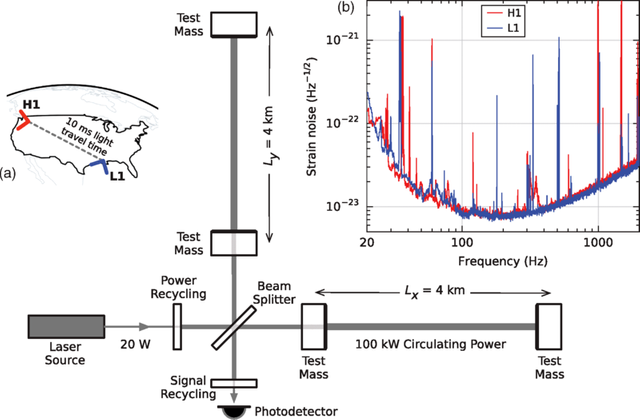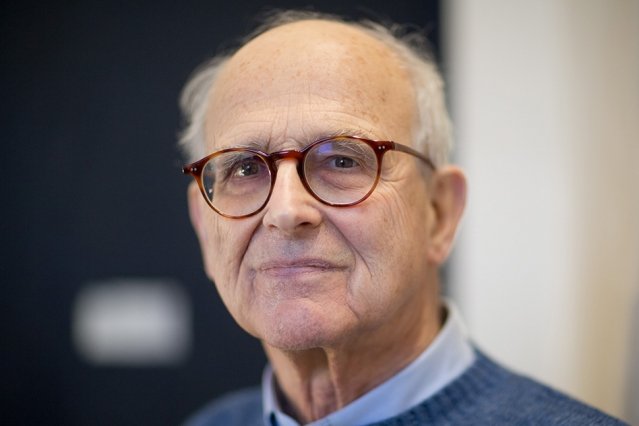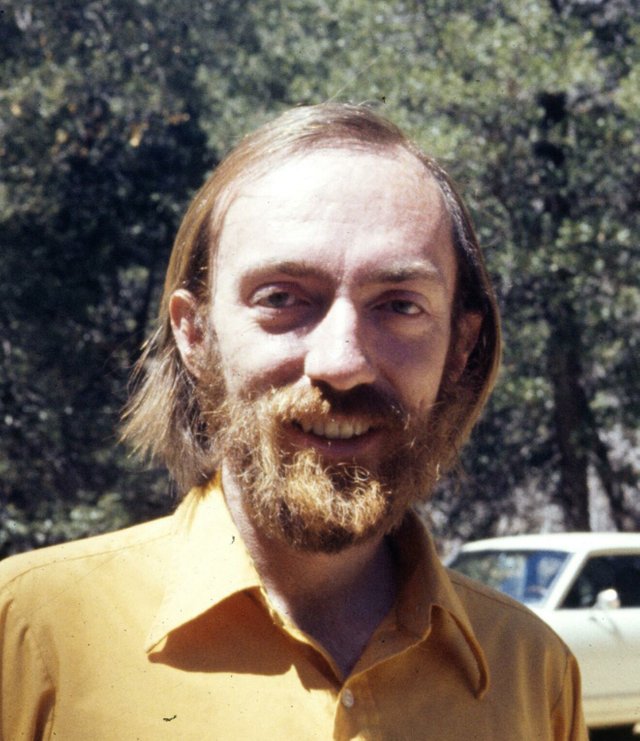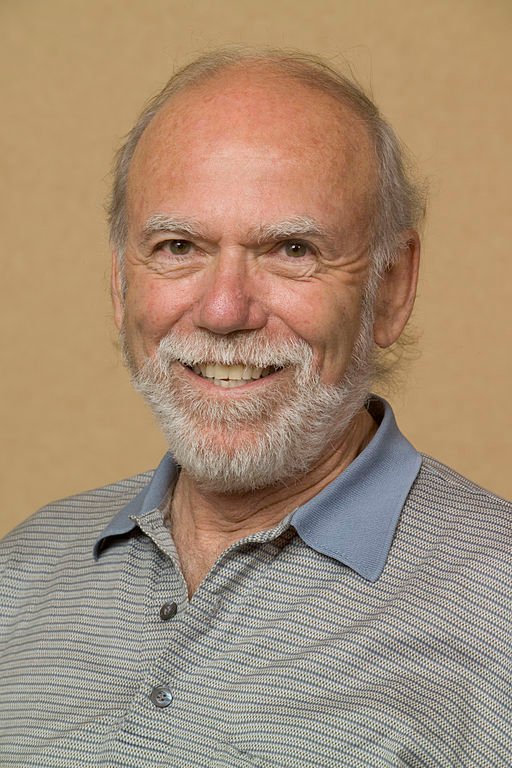#2017 IQ overload: Barry Barish, Rainer Weiss and Kip Thorne

Introduction
This is a special part of IQ overload series. We have recently got to know who won the Nobel Prize 2017 in Physics! They weren't participants of 5th Solvay Conference, but I decided that I have to write an entry about them - how their lives look like, for what they received a Nobel Prize and how did they manage to do it. In 2017 winners of Nobel Prize in Physics are Barry Barish, Rainer Weiss and Kip Thorne. What did they get it for? Royal Swedish Academy of Sciences says: "for decisive contributions to the LIGO detector and the observation of gravitational waves".
Before we jump into short biography of those great scientists, I will try to explain a little bit what is the LIGO detector for and what are gravitational waves.
Gravitational waves and LIGO
Einstein's general theory of relativity
Gravitational waves were predicted by GTR's equations. But what are those? Gravitational waves are moving at the speed of light ripples in the curvature of spacetime. They stretch and compress space in orthogonal directions as they went by.
Every massive object that accelerates emits gravitational waves, but only when the object is very massive and moves with very high acceleration we are able to observe them. I mean really heavy objects (like black holes) with really high acceleration (like a black hole has just before the collision with another black hole).
Laser Interferometer Gravitational Wave Observatory (LIGO)

image credits: Wikipedia
LIGO is a gravitational waves detector, which was built in 1994 in Hanford and in 1995 in Livingston. Why have two versions been built in so distant locations? The answer is simple - this helps to eliminate the impact of the environment on observation. When one detector detects something that looks like a gravitational wave and the other doesn't, it means that it wasn't a gravitational wave but something else (maybe just a random seismic movement).
How does LIGO work?
The LIGO, which looks like L letter, is built with two pipes of 4 km each that are touching at right angles. Inside both of them, there is a stainless steel pipe, in which there is almost complete vacuum. Laser and a beam splitter are located at the point where the pipes are connected. The idea is that LIGO measures the length of two pipes using the laser beam. Gravitational wave changes the length of pipes - one is being shrunk and the other is being stretched. But the difference is so small that pipes had to be so long to let us hear gravitational wave impact. When I say small I mean really really really small (even event that is the biggest space cataclysm we can imagine would emit gravitational waves they would be less than one-thousandth of the diameter of the proton).
14 September 2015 was a historic day. LIGO detected first gravitational wave and its impact on space. This is why our magic trio - Rainer Weiss, Kip Thorne and Barry Barish - won a Nobel Prize. This event not only proved Einstein's general theory of relativity (again) but also it opened up new era of astronomy - now we are able to detect big events in space using gravitational waves detectors.

image credits: Bryce Vickmark at mit.edu
Rainer Weiss
He is the one who won half of Nobel Prize 2017 pool (the other half was shared by Thorne and Barish). He was a technical leader in the process to detect gravitational waves. Weiss invented the laser interferometric technique which is used in LIGO and without it gravitational waves couldn't be detected.
His life in a nutshell
Rainer Weiss was born in Berlin in 1932. His father was a physician, neurologist, and psychoanalyst, but he was forced by nazi to leave Germany (he was not only a Jewish, but also active member of the Communist Party) so he moved with his family first to Czechoslovakia and then to USA. Rainer Weiss studied at MIT, where he got his Ph.D.
His journey with gravitational waves began in 1967 when he gave a course on general relativity. He knew that even Einstein said that
This [gravitational wave] is so tiny that it will never have any influence on anything, and nobody can measure it.But Weiss realized that it may be possible to measure hear them because the technological progress from 1916 was huge. But during the course, many students asked him questions about Joseph Weber's experiment idea using which he wanted to detect gravitational waves. Rainer Weiss couldn't explain it to students, because - as he said - he didn't understand what was Weber doing. So he asked himself
What’s the simplest thing I can think of to show these students that you could detect the influence of a gravitational wave?
source: news.mit.edu
And this is how he invented a LIGO idea. So it took a lot of time from an idea to first gravitational wave detection. It is worth to work hard for a long time!

image credits: Wikimedia
Kip Thorne
He provided theoretical support for LIGO and dealt with the prediction of gravitational wave strengths and their impact on Earth. He was the thoretical physicst of the project. Also, Kip Thorne was very usefull in data analytics of LIGO experiments.
His life in a nutshell
Kip Thorne was born in Logan on June 1, 1940. He got his Ph.D. in 1965 on Princeton University and soon after he became one of the youngest professors in the history of the California Institute of Technology. Kip Thorne is well-known thanks to his major role in the scientific preparation of movie "Interstellar".
There are large numbers of my finest colleagues who are quite devout and believe in God [...] There is no fundamental incompatibility between science and religion. I happen to not believe in God.
source: Wikipedia

image credits: Wikimedia
Barry Barish
Only science work is not enough to run the scientific project - this is why Barry Barish, as a successful experimental physicist, won a Nobel Prize. He was the one who knew what director of LIGO should do - how to get a funding and build everything that was intended.
His life in a nutshell
Barry Barish was born in Omaha on January 27, 1936. His parents were Jewish immigrants from Poland. He got his Ph.D. in 1962 in experimental high energy physics at the University of California. His first experiments were performed in Fermilab. He also directed Monopole, Astrophysics and Cosmic Ray Observatory (MACRO), and this is where he gained experience to then run LIGO.
image credits: Wikimedia
Summary
In this article I covered gravitational waves, LIGO detector and 2017 Nobel Prize in Physics winners - Rainer Weiss, Kip Thorne and Barry Barish - the amazing trio that heard gravitational waves for the first time.
References:
- more about gravitational waves: Wikipedia
- more about LIGO: Wikipedia, black-holes.org and news.mit.edu
- more about Rainer Weiss: Wikipedia
- more about Kip Thorne: Wikipedia
- more about Barry Barish: Wikipedia
0. IQ overload: the story of one photo
1. IQ overload: Maria Skłodowska-Curie
2. IQ overload: Niels Bohr
3. IQ overload: Albert Einstein
4. IQ overload: Werner Heisenberg
5. IQ overload: Erwin Schrödinger
6. IQ overload: Max Planck
#2017. IQ overload: Barry Barish, Rainer Weiss and Kip Thorne
Do you like science? Join us on #steemSTEM!

gif made by @foundation
good explanation and interesting, you explain that very well, so that I can understand, what do you mean. I really enjoy it, it's amazing
Thanks!
Oh I missed your post! it is actually a very nice post and very well explained!
The LIGO results indeed open a new era of gastrophysics (and this has nothing to do with the intestines). Now, with Virgo into the game, we will learn more (in particular, about the positions of the sources, and about the existence of primordial black holes).
fart
Wow, this is a wonderful post! You did a really nice job talking about the history of gravity waves and retrospective on the life of Weiss and Thorne. Do you advertise your content off steemit? The community is small here still, but content of this quality deserves viewers (IMO). New bloggers run into these issues all of the time... How to drive traffic to a blog? The answer usually comes down to persistence and exposure.
I'm glad you enjoyed it ;)
I haven't tried to advertise my content yet and I'm not gonna work on it in this month (lack of time), but I will try to post like once per week to keep my account up-to-date ;)
Also, I don't really know where to advertise it, but I'll try to figure it out when I have more time ;)
Your posts are always heavy weighted. I am a very big fan of you